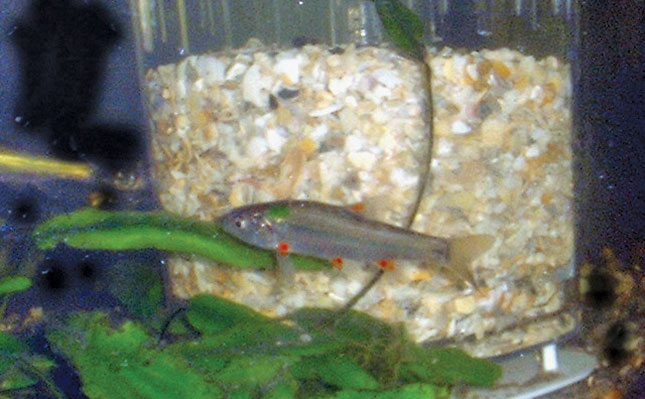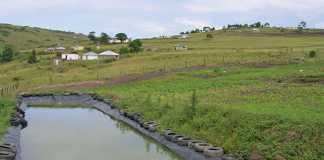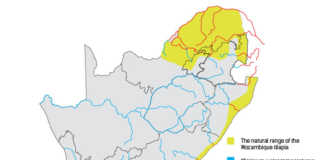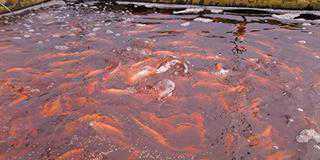
Photo: Nicholas James
Most people think of aquaculture as involving only fish production. Today, however, aquaculture includes shellfish, seaweed, spirulina, and plants such as waterblommetjies.
Other obvious aquacultural pursuits are hatcheries that produce fingerlings, stocking dams and sport fishing.
READ Indigenous species: let’s widen the net for aquaculture
An often-ignored goal of aquaculture, however, is the creation of sanctuaries and restocking for conservation reasons.
In many parts of Africa, natural fish populations have become endangered for a variety of reasons, some of them fairly complex. While alien invasive fish species are often singled out as culprits in this regard, this is an oversimplification of a complex interplay of events.
Take Lake Victoria as an example. Before the 1940s, the water was shallow but clear, and surrounded by natural riverine forest. Human populations around the lake were small, and the natural fish production of the lake collectively sustained a fishery limited by relatively inefficient catching techniques.
The fish comprised three species of endemic tilapia, several hundred small haplochromine cichlids, and one large Labeo species.
In the early 1950s, government fisheries introduced the Nile perch (Lates niloticus), a large predatory fish species, from below the Murchison Falls on the Albert Nile.
For two decades, little changed. Then, during the 1960s and 1970s, a huge increase in the human population around the lake resulted in the forests disappearing, the lake water becoming eutrophic, and consequent invasions by water hyacinth in inshore areas.
For reasons unknown, the Nile perch suddenly underwent a population explosion and the small haplochromines became their prey. Hundreds of species disappeared and the lake ecology became unstable.
READ Aquaponics: how to get plumper, healthier fish
Similarly, in the Western Cape, the clear mountain streams, home to such endemic redfin minnow species as Pseudobarbus burchelli and other indigenous species, were dammed and diverted to irrigate fruit orchards.
Fertilisers and insecticides changed the water chemistry and eliminated insects that formerly served as food for the fish. Stressed by these changes, they became easy prey for introduced bass, and again many species suffered great declines.
A solution: stock farm with declining species
In conservation terms, the ideal solution would be to turn back the clock and remove the detrimental environmental influences, as well as the bass.
This is clearly unrealistic, but conservation hatcheries can help to save these indigenous fish. Countless farm dams are used for the irrigation of orchards. Stocked with fish such as the Clanwilliam yellowfish (Labeobarbus seeberi) and other declining species, these dams could serve as sanctuaries.
Most farm dams in the Western Cape are too warm in summer for trout and too cold in winter for tilapia, ruling them out for such species.
At one stage, the hatchery at Clanwilliam Dam produced fingerling yellowfish for stocking within the natural range of the species, as well as other species such as the Clanwilliam sawfin (Pseudobarbus serra) for identified sanctuaries.
This most valuable form of aquaculture should be continued and supported to safeguard these species from extinction, and private waterbodies can play a valuable role in this.
As with most worthwhile activities, government agencies and private landowners need to work together on this. ▪













